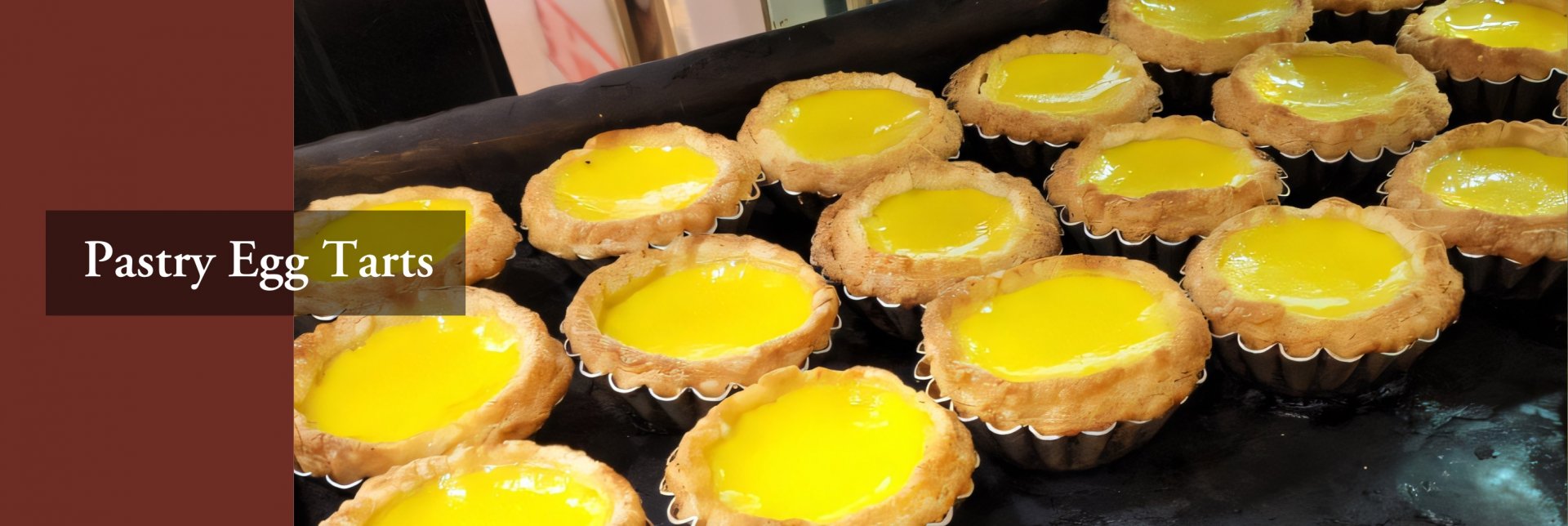Pastry Egg Tarts
When prepared to enjoy egg tarts, we might hesitate over pie crust and puff pastry crust. Everyone has his or her own favorite. If the stomach permits, we may as well try both. The Chinese name Ta (撻) was transliterated from its English name Tart. And the recipe was introduced from the west, though localized in Guangzhou and Hong Kong.
For Yum Cha at a tea house during the early days, it’s common to find Pastry Egg Tarts as a dessert. Why this Hongkong-styled food seems integral in tea house menus so early? Of course, it puzzled me in childhood. Later I thumbed through various materials, and gradually solved the mystery of Pastry Egg Tarts served in tea houses.

Pastry Egg Tarts were first introduced to Guangzhou, an open trade port in early days accessible to different cultures around the world, including the western diet culture. Since the 20th century, Cantonese tea drinking culture got all the more popular, which in turn led to increasingly fierce competition among tea houses. Therein one way to attract customers is to update dim sum as often as possible to meet their thirst for fresh experience.
Dim sum chefs(點心師傅) began to inspire themselves with western food, such as tart. The prototype they imitate is western Custard Tarts (吉士撻). After learning about the recipe, they were troubled with such problems as ingredient access and costs, thus had to use Chinese ingredients and methods instead.
Instead of using butter in the western tart crust, dim sum chefs use lard. Such Chinese pastry crust first appeared in the ancient diet culture, and was adopted in a variety of pastries. The lard-based pastry remain as a puffing (起酥) method since ancient times. Both Chaoshan Mooncake (潮式月餅) on Mid-Autumn Festival and Pan-Fried Turnip Pancake (蘿蔔絲酥餅) in restaurants adopt the traditional pastry crust.
Now that the crust is done, it’s time to alter the filling. The ingredients of custard include milk and cream, which were unusual in tea houses then. And in consideration of costs, such ingredients fail to be used for other food. Hence the recipe had to be adjusted.

With inappropriate ingredients deleted, only eggs and sugar are left. Cooked with water, they can make Chinese steamed egg pudding. The filling can be made in a way familiar to dim sum chefs. Such altered Pastry Egg Tarts became an option in tea house menus then. Quite a few Canton tea houses opened branches in Hong Kong. Plus the exchanges of Cantonese diet culture, Pastry Egg Tarts entered Hong Kong with the tea drinking culture.
In 1950s, Hong Kong cha chaan tengs mushroomed, and included Pastry Egg Tarts in the menus of neighboring bakeries or pastry shops. Therefore, we can find Pastry Egg Tarts in cha chaan tengs, bakeries and tea houses. Nowadays tea houses still serve Pastry Egg Tarts. Some may add milk, make different flavors, or even add edible bird’s nests atop.
Later Pastry Egg Tarts appeared more in cha chaan tengs(茶餐廳), and became one of the iconic food there. With the widespread of cha chaan tengs from place to place, they gradually became familiar to various customers.

Reference:
Book
1. 蕭欣浩:《屋邨尋味記》(香港:萬里機構,2021年)。
All articles/videos are prohibited from reproducing without the permission of the copyright holder.




Welcome to leave a message:
Please Sign In/Sign Up as a member and leave a message